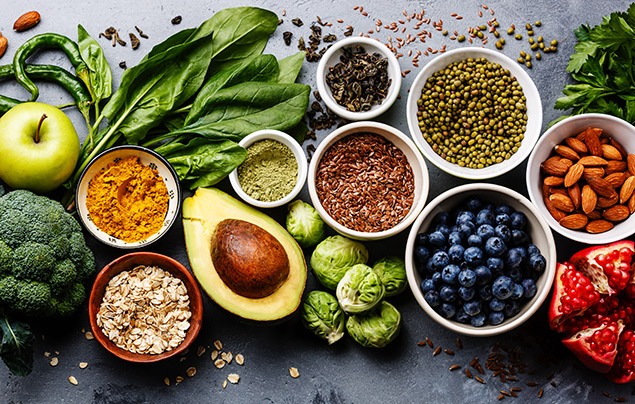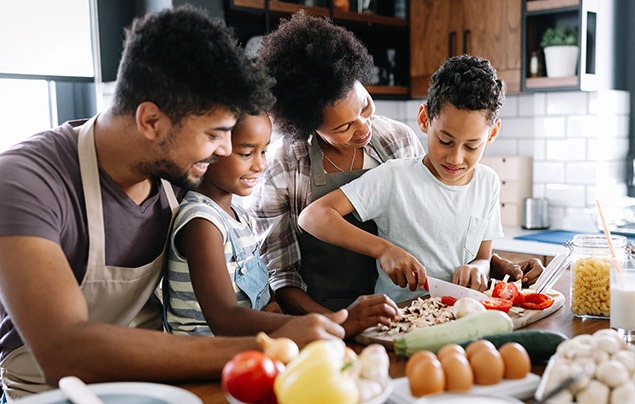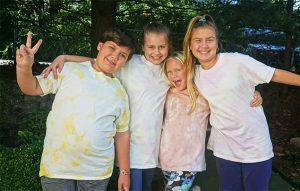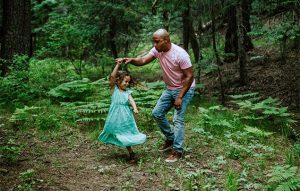‘Brain food’ is real. Here are the top treats to help grey matter grow…
Boost your kids’ development with these expert-approved foods!
Everybody’s heard that eating carrots can help improve eyesight, or that calcium-rich milk is good for your teeth and bones. But what about brain food, that helps boost your mind?
“From a neuroscientist’s perspective, food is really fundamentally important for brain health, because our brains literally run on nutrients,” says Lisa Mosconi, director of the Weill Cornell Women’s Brain Initiative and author of Brain Food: The Surprising Science of Eating for Cognitive Power.
Brains need different nutrients as they age, and early childhood is a particularly critical time for brain growth, development and health.
“Even just in the first few years of life, the brain is really sprouting neurons at light speed,” says Mosconi, who’s also a neuroscientist. “A baby’s brain has more neurons, more brain cells, than there are stars in the Milky Way.”
Overall, scientists have found around 45 nutrients that are key to brain health, including things like protein, zinc, iron, choline, folate, iodine, vitamin A, vitamin D, vitamin B6, vitamin B12, and omega-3 fatty acids.
Of course, the words “folate” and “choline” aren’t likely to make anyone’s mouth water—children or otherwise—so the trick is to target the foods that are naturally rich in the good stuff. In addition to the foods listed below, consider adding oats, nuts, citrus fruits, beans and vegetables of different colours to the menu.
“Starting early is key,” says Claire McCarthy, a paediatrician at Boston Children’s Hospital and assistant professor of paediatrics at Harvard Medical School. “If all a child has ever known is healthy foods, they’re far less likely to fight with their parents about eating them.”
By targeting a few food groups and experimenting with new ways of preparing them, fuelling your family’s brain growth can be easier than you might think. Check out these brain foods…
Berries
WHY IT MATTERS: Common berries like blackberries and blueberries are bursting with vitamin C, and though most people associate that nutrient with the immune system, the brain needs it too. An effective antioxidant, it plays a crucial role in neutralizing naturally occurring free radicals that cause damage to our DNA and cells.
“It’s also important for the formation of neurotransmitters, the chemicals used for signalling in the nervous system,” Mosconi says. Without enough vitamin C, the integrity of many body tissues, brain included, start to weaken.
Raspberries, dark cherries, mulberries, and goji berries are other superstars in this category. Berries also boast a good mix of natural sugars and fibre, which is important for the digestive system.
HOW TO GET KIDS EATING: Berries are probably going to be the easiest sell on this list, but if you’re looking to switch things up, Mosconi recommends dipping berries in yogurt or even dark chocolate, which has its own brain benefits thanks to an essential amino acid called tryptophan. You might also freeze berries and blend them into a sorbet with a touch of lemon juice and maple syrup. Food can be fun too – here’s how to transform berries and apple into a tasty kid-friendly treat!
Plums
WHY IT MATTERS: This fruit, whether fresh or dried (prunes) is a great source of tryptophan, an essential amino acid linked to a neurotransmitter called serotonin, which can help regulate mood. Keeping your child’s brain supplied with tryptophan will also help them sleep at night, giving their brain time to rest and repair itself. Chia seeds and raw cacao—an ingredient in dark chocolate—also contain tryptophan.
HOW TO GET KIDS EATING: With a lip-smacking combination of sweetness and tang, pureed prunes can be one of your baby’s first solid foods. As kids get older, whole plums are a fun alternative to apples in the lunchbox. Or you can get fancy: slice prunes down the middle and slather them in crunchy peanut butter for a healthy snack full of fibre and protein.
Sweet potatoes
WHY IT MATTERS: If there was one food to focus on for children’s brain health, it would be dark leafy greens, says Mosconi. But she’s still honest: “Kids won’t eat them.” So instead, how about a tuber that’s naturally sweet, versatile and packed full of another antioxidant known as vitamin A? This essential vitamin is important for general brain health as well as central nervous system development.
HOW TO GET KIDS EATING: You can mash ’em. Bake ’em. Fry’ em. Grill ’em. Turn ’em into tots, tarts, latkes, or soups. The possibilities are endless. Don’t forget to compost any waste, too!
Getting your little ones excited about the process of weighing, measuring and safely cooking different ingredients can help enthuse them about eating the results, too. That’s why National Geographic Kids magazine sometimes includes family-friendly, healthy recipes that you can cook and eat together. Spark their imagination, with a subscription!
Fish
WHY IT MATTERS: More than half of our brain is composed of fat, so it’s a no-brainer that lipids play a role in neurological health. But the kind of fats you eat matter. For instance, one type of omega-3 fat known as DHA (docosahexaenoic acid) is extremely important for building nerve cells.
These cells are responsible for healthy brain growth and development, as well as learning skills, Mosconi says. To get it, “you need to focus on cold-water fatty fish.” Some of the most DHA-rich fish are salmon, mackerel, anchovies, sardines, and herring, easily remembered with the acronym SMASH.
HOW TO GET KIDS EATING: With a young daughter herself, Mosconi often makes what she calls the “elevated fish stick.” First dip a fish fillet in a bowl of egg, then into a bowl of finely crushed pistachios, almonds, breadcrumbs, and salt. Finish by sautéing in coconut or extra virgin olive oil. Of course, if your kiddo won’t touch one of the SMASH fish, it might help to get them used to the taste of fish with the regular old patties and sticks found in the freezer section. Cod has healthy fatty acids, too!
Planning to introduce brain food?
McCarthy has a parting piece of advice: Parents need to walk the walk.
“Kids watch their parents and learn from them,” she says. “If you want your kids to eat healthy brain foods, you need to eat them too.”
Keep up to date with the latest parenting articles from National Geographic Kids by signing up to our free email newsletter. You’ll receive positive news stories, fun family activity ideas and more.
















LEAVE A COMMENT
THANK YOU
Your comment will be checked and approved shortly.
WELL DONE,
YOUR COMMENT
HAS BEEN ADDED!
COMMENTS
CUSTOMIZE YOUR AVATAR